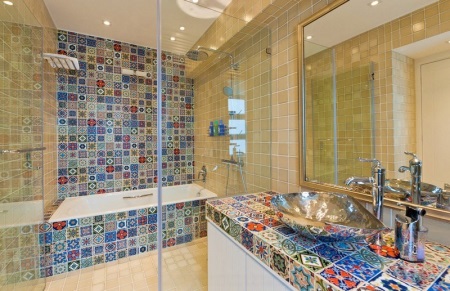What tile is better to choose for the bath?
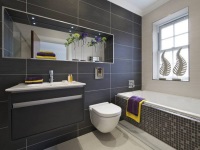
Bathroom tile is an aesthetic, durable material that meets all the requirements for finishing wet rooms. Manufacturers offer a lot of options for tiles, and not to be confused when buying, it is worth knowing a few important nuances.
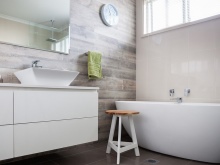
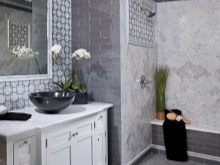
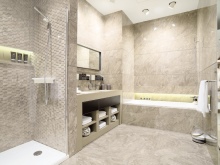
Tile types
Porcelain tiles
Durable tile used for the floor. It has high wear resistance - to chips, abrasion and scratches, durability, and the variety of appearance makes porcelain tiles universal.
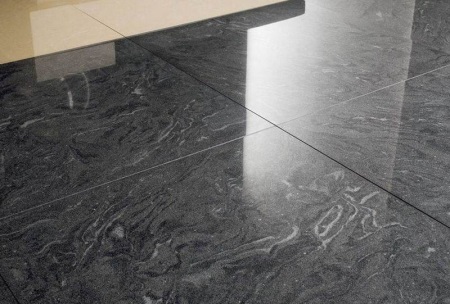
Clinker
Low porosity, very durable tile, can well withstand humidity, temperature differences. It does not absorb water and is easy to clean.
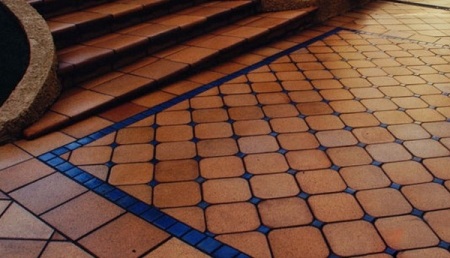
Cotto
Tiles made of red clay, most often without a glaze. Must be treated with a hydrophobic composition after laying, since it is porous and absorbs moisture.
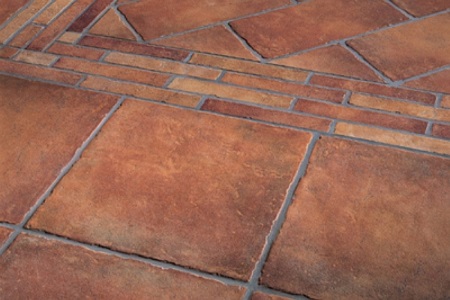
Monocottura
Single fired tile, used both for floor and wall cladding.
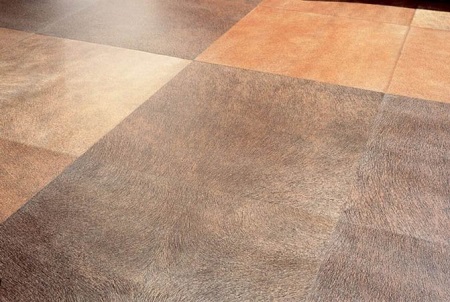
Bicottura
Double fired glazed tile, only suitable for walls, not suitable for floors. Available in a wide range of colors and patterns.
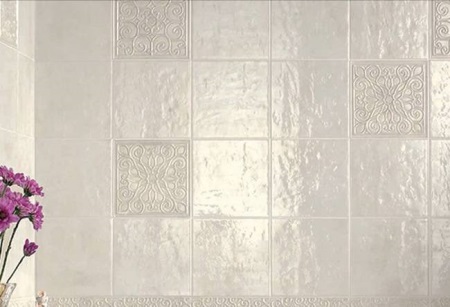
Quality criteria
Moisture absorption is one of the key criteria. If the wall tile absorbs water well, it will eventually gain a lot of weight and the adhesive won't hold it in place. Ideally, if the bathroom tile is hydrophobic. To determine this, you can drop water on the underside of the tile right in the store.
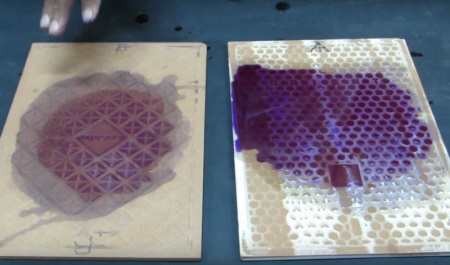
Also, the underside should be inspected for flatness. The back side of the tile has a depression, and the smaller it is, the less adhesive solution will be needed. The glue must fill this void, otherwise the resulting air cavity will interfere with a good adhesion to the surface.
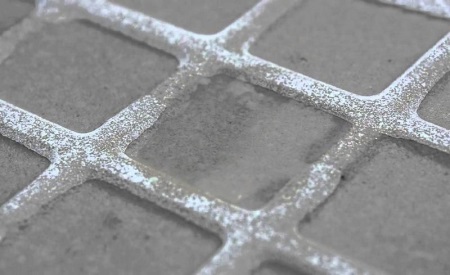
The front side of the tile should be smooth and even, the color - uniform, the pattern - clear and uniform. Glossy tile should have no bubbling and roughness, when turning in the light, the glare should lie evenly. If the option is matte, the surface should be even, with no microscratches, cracks or potholes.
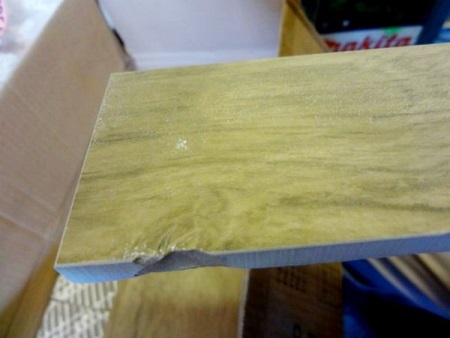
Decorative tiles should be resistant to light: a front surface without stains or burned areas is a good indicator. It is best to compare the exhibition sample with the tiles in the box. The marking on the tile will help you understand how the material will behave in use - the "AA" symbol indicates that the tile is resistant to chemicals.
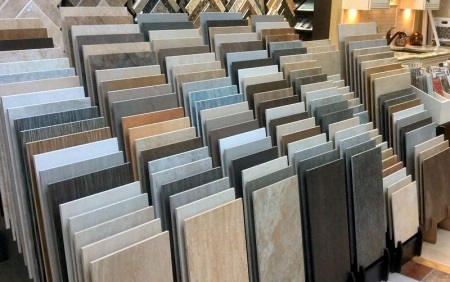
Shape and Size
As a rule, tiles have geometric shapes, the most common are square and rectangle. Square tiles have a format of 50x50 or 30x30 centimeters. These options are equally successful for the floor and for the walls.
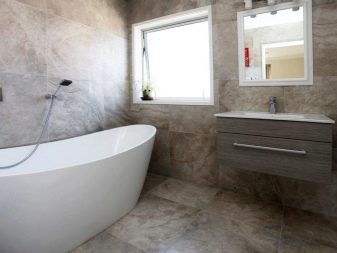
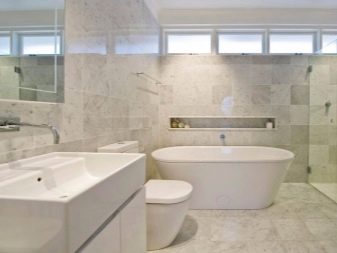
There are mini-variants - tiles 10x10, which will hide the curves of the walls well, will look great in conjunction with the larger elements. Quite small squares - mosaic tiles. As a rule, they are sold already glued on a mesh base, which facilitates installation.

The most common rectangular tile has a size of 20x25 centimeters, it can imitate brick, wood, hardwood or laminate. Laying rectangular tiles, you can choose an unusual layout and achieve a really interesting effect.
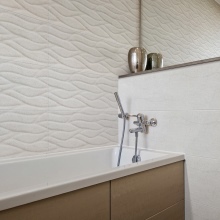
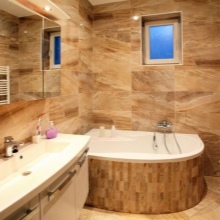
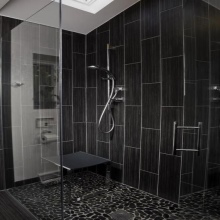
There is also a tile in the form of complex shapes, most often polygons. Such tiles are not easy to put, but if the layout is done correctly, you can get an unusual beauty pattern, as well as visually smooth out the shortcomings of the bathroom, for example, visually expand the room or hide irregularities.
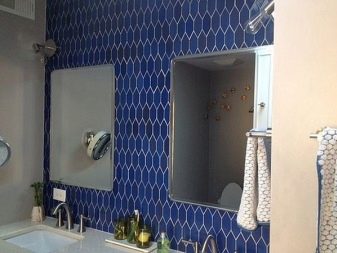
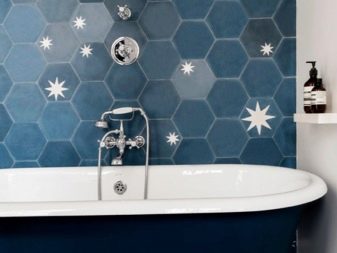
An important role is played not only by the shape of the tiles, but also by their size. It is worth approaching this point rationally, as it affects not only aesthetics, but also practicality. Too small tiles will create a lot of seams, which are most vulnerable to the effects of water, and will require additional time to caulk joints. Experts advise to choose the best option, and do not forget that too large tiles also have their disadvantages.
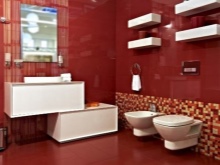
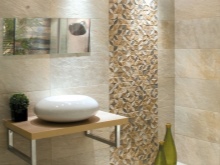
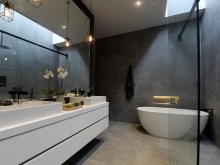
If the room has a complex configuration, the larger the size of a single tile, the more often it will have to be cut. This increases repair time, money and labor costs. If you have chosen a complex layout, the same rules apply - patterns and transitions are easier to perform from small tiles.
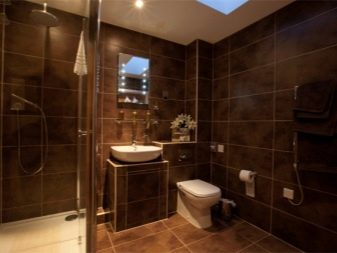
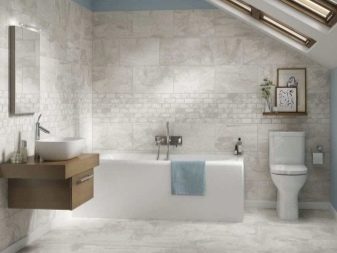
Technical characteristics
Tile, produced today, is suitable for different purposes.
Technical characteristics of tiles for the bathroom should be as follows:
- Moisture resistance;
- Resistant to temperature fluctuations and exposure to steam;
- High abrasion resistance floor covering;
- Loyalty to chemical cleaning agents;
- Durability, including the fall on the tiles of heavy or sharp objects;
- Resistance to fading and discoloration.
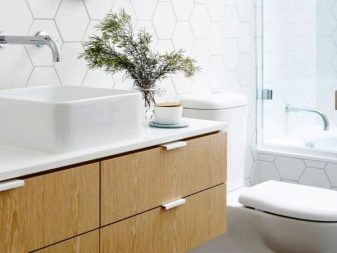
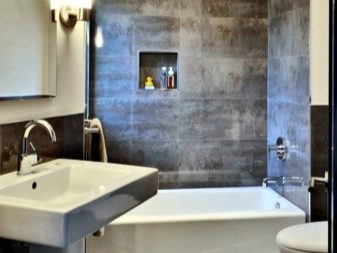
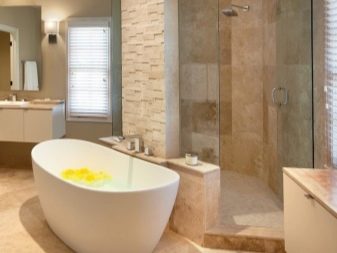
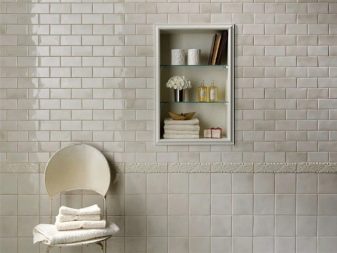
Correct geometry
When selecting tiles that will lay not only beautifully, but also qualitatively, it is necessary to select material with the correct geometry - this will make clear even seams, have no problems at the time of the joints.
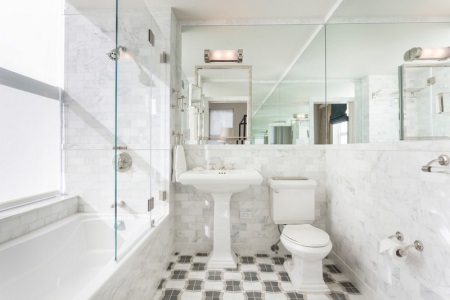
Inexpensive versions often have geometric defects - the tiles vary in size by a couple of millimeters, which is not too noticeable when buying, but it is striking at the end result. Even a minimal discrepancy of 1-2 millimeters turns the material into a defective one.
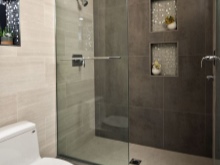
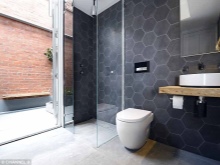

When buying, you need to make sure of the geometry of the tiles - to do this, you need to take several samples and put them on a flat horizontal surface on the side. If you see that the upper edges do not coincide, have differences, in front of you - defective.

Spectacular solutions: combination options
Designers offer many options for decorating the bathroom, but there are the most winning, successful solutions, proven over the years. First of all, it is a bathroom decorated in aquatic shades. Light blue, turquoise, blue shawl is a classic for bathroom decoration. These colors are perfectly combined with each other, also in this range successfully fit white, silver and gold colors.
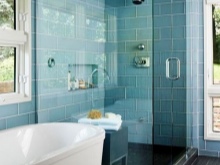

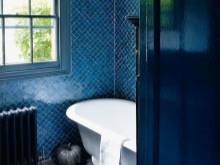
Another spectacular solution - a bathroom in the color green. Calm shades of young grass, lettuce or pistachio shades, deep emerald and malachite contribute to relaxation, soothing. These colors are pleasing to the eye, experts even advise to begin and end the day with contemplation of the green.
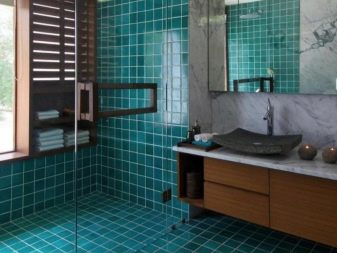
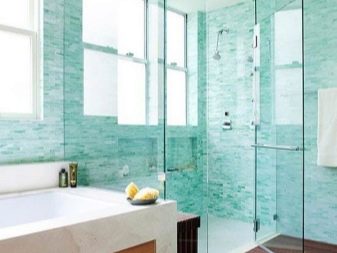
The red color scheme will be a good option for active and passionate people. The combination of red and white will look advantageous, and the proportions of the selected colors can be combined to your liking. This range also includes crimson and pink shades and fuchsia. Pastel, pearlescent combinations of these colors will look good - as a rule, they are preferred by women.
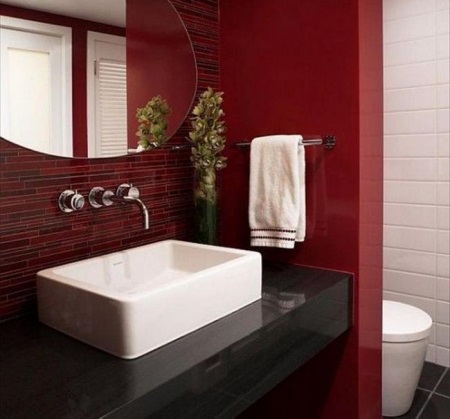
The monochrome combination of black and white is considered classic. The combination of these colors always looks stylish, chrome plumbing fits in well.
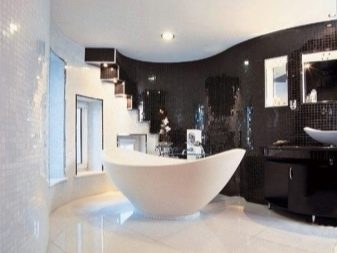
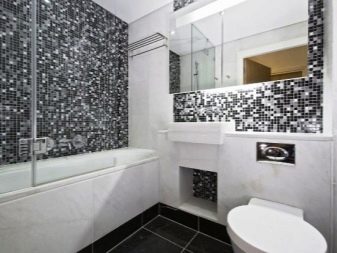
Unusual solutions and decor
Lovers of original solutions today, too, just go to the store to choose an unusual tile for the bathroom. Designers offer a lot of options to make the bathroom an object of real pride.
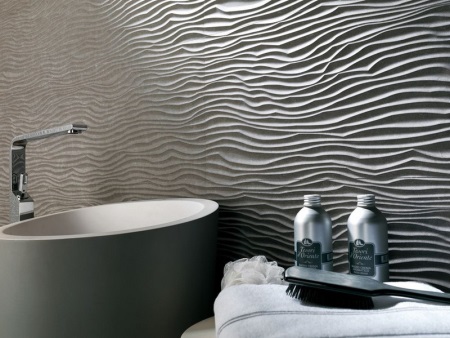
Tiles with different textures - like stone, wood, leather or even fur - are a great solution for those who want to achieve an unusual effect by proven means. Such tiles are no different in terms of laying, but the result looks excellent and fresh. In the same area belongs to the tile "subway", or, as they call it, "boar". This is a rectangular tile, imitating brick, which can be laid with seams or seamlessly.

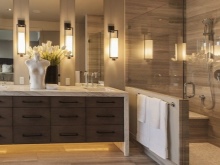
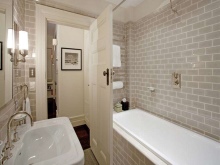
Very elegant, but losing in practicality - tiles with 3D-pattern. In this case, the protruding parts can be part of each tile, and the element itself can be completely three-dimensional. There are even versions where a hook for a towel or clothes "grows" out of the tile itself. However, 3D tiles can be flat, but at a certain angle to get depth and show all kinds of drawings and even whole plots.

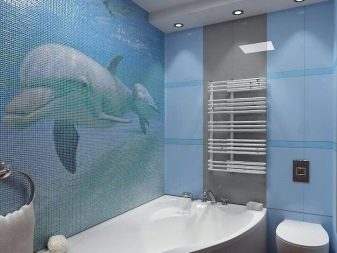
Bathroom owners who like luxurious interiors can buy tiles encrusted with rhinestones. Tiles with non-precious stones, mirror inclusions, with glitter or shimmering particles look very smart, and with the right combination - not at all vulgar.
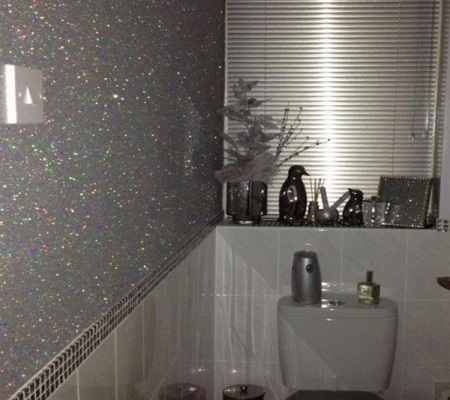
Choosing Tips
- Dark tiles, although they look spectacular, but they are difficult to care for - traces from water can be seen on them;
- Mosaic tiles will help to advantageously issue one of the walls or tile the area near the sink or bathtub;
- Do not get carried away with colors - two or three shades are enough. Bright tiles are perfectly combined with snow-white tiles;
- Take a closer look at the ready-made collections - they include both basic tiles and a variety of decor options.
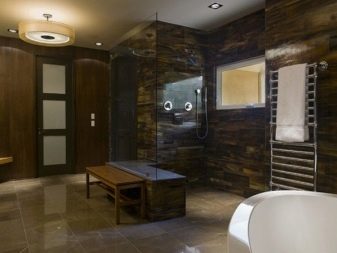
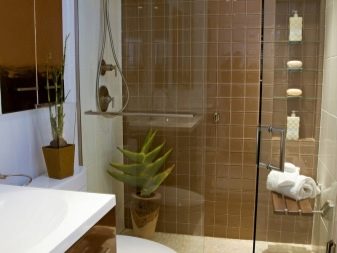
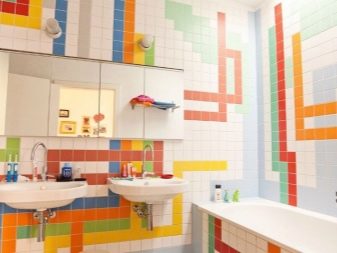
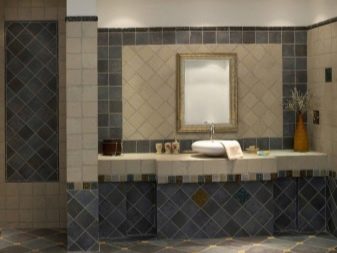
For a small bathroom, light shades are best suited, darker shades are preferable to leave for the floor. The size of the tiles is suitable for smaller than average - it will not ripple in the eyes and visually expand the walls. For a spacious bathroom, it is better to buy a tile of large size, combining it with the average. A large room allows you to fulfill any whim!
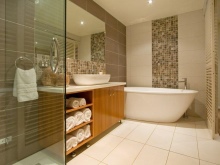
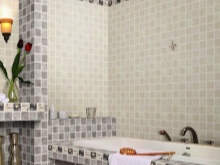
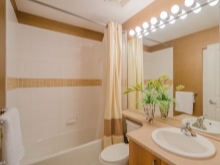
Example of intelligent design
Multicolored pechwork style tiles, combined with neutral beige, gives the bathroom an Arabian flavor. A marvelous option that looks stylish yet understated at the same time.
